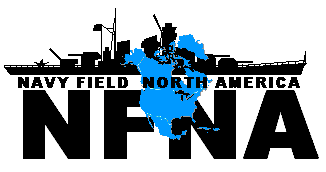


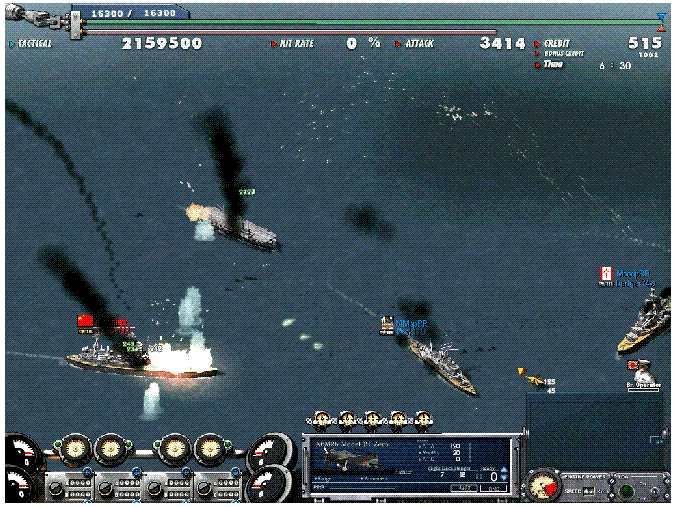
Navy Field is a massively multiplayer online game simulating naval combat during World War II. The game was developed by SD Enternet, a South Korean company. Navyfield was released in 2002. It was made available to western players as a free open beta on November 5, 2004, and in commercial form on February 2006. Navy Field is currently available online as a free download, with optional paid subscription to enhance experience gains and enable purchase of premium items.
Navy Field is an interpretation and/or a simulation of World War II naval combat. It contains MANY abstractions and some speculative ships and weapons. The visual designs of the ships, guns, and planes are very detailed. However, characteristics of some of the units in the game are sometimes historically inaccurate.
The object of the game is to upgrade and advance a WWII naval ship and to participate in naval battles with other people online. Gameplay starts out by configuring a naval ship to prepare it for battle. Once the ship is configured with armament, armor, and engines, the player proceeds to the game's Battle Map and joins one of the open battle rooms.
Battles are played in real-time using isometric graphics. Players control their ship's weapons and speed during battle. Ships can have gun turrets, torpedoes, depth charges, naval mines and anti-aircraft guns. Larger ships can also hold aircraft that can help to scout for or attack other enemy ships and aircraft.
When a new player creates an account, he or she receives a set of Neutral Nation (unclassified) starting Sailors. They are supplemented with fifty thousand credits and thirty two thousand points to spend on purchasing a neutral ship and more crew. Players may also buy or sell naval guns, torpedo launchers, and other equipment using credits, or trade with other players for ships and crewmen.

Once a Sailor has reached level 12, he may be assigned to one of four nations represented in the game.
Each of the four nations in the game all have their weak and strong points, explained below. Some ships and weapons in the game are noticeably strong or weak compared to the ships and weapons of other nations at similar levels; this also applies to other important areas, such as support crews, aircraft, and armor.
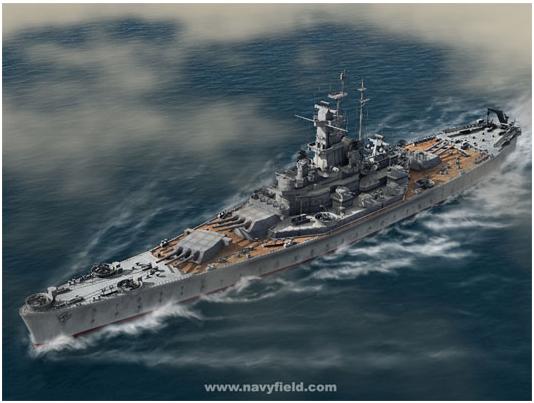
Royal Navy
RN - Royal Navy - British Empire. The RN has the most effective armor, the best support crews, a large variety of fast battleships, as well as the hardest hitting guns. However, RN guns lack a fast reload speed (due to the system used to class their gunners) and RN torpedoes are the slowest and have the shortest range (albeit high damage). Players gain access to battleships and heavy cruisers at lower levels than the other navies. RN aircraft are also the most durable in the game.

United States Navy
USN - United States Navy - USA. The USN is presented as a balanced all-around choice, with good fighter pilots, good aircraft carriers, and powerful light cruisers. United States heavy cruisers are considered to lack range compared to those of other nations, and its early-to-mid game battleships, the Nevada class, Alaska class, and New Mexico class, are generally considered to be inferior to their counterparts in other navies due to their lack of range. However, its later battleships, the Iowa and Montana classes, are very competitive, and have among the heaviest broadsides in the game. Post Open NavyField patching, US BB2s such as Colorado, and Tennessee 1945, are generally considered the best BB2s. These buffed ships have decent range, excellent firepower, and a higher speed. USN large-caliber naval guns also have a high maximum angle (yet not as high as IJN variants), giving USN shells a similar hangtime advantage.

Kriegsmarine
KM - Kriegsmarine - German Reich. Naval guns of the KM typically have the greatest range of all the four navies, yet do the least amount of damage for their size. In addition to having the least shell damage of their calibers, most KM ships have relatively few barrels, giving German ships the lightest broadside of all similarly tiered ships. German ships also boast some of the best speeds in the game. Some KM ships lack the displacement required to hold large amounts of armor, yet others can stop 16-inch HE shells. Typically, the Kriegsmarine's gunships have excellent anti-aircraft weaponry and its carriers have powerful fighter aircraft. Most of the ships available for Kriegsmarine are Plan Z projects which were never built or commissioned.

Imperial Japanese Navy
IJN - Imperial Japanese Navy - Empire of Japan. The Imperial Japanese Navy is the only nation that can use "Long Lance" oxygen-fueled torpedoes and it has some of the fastest ships in the game, as well as a large assortment of aircraft carriers and a line of ships designed specifically to use torpedoes as their primary weapons. The earlier Japanese Battleships are usually considered hard to use, as they lack both speed and range, hence, the Imperial Japanese Navy is largely considered a CV and torpedo nation. However, the IJN does have access to the Yamato class battleships, and later, the Super Yamato class battleships, mounting powerful, long ranged main batteries and the longest range of any anti-aircraft weaponry. IJN large-caliber naval guns are known for having a very high maximum angle, giving them the advantage of incredible ability to pierce armored ships, and they "gain" range when on the run due to the shells' long hangtime. However, the long shell hangtime also make them difficult to use. IJN aircraft are extremely fast, outrunning their counterparts of other nations.

Each nation has a large variety of all types of ships. As a player's Bridge Operator levels up, he gains access to more powerful ships, ultimately achieving a battleship or an aircraft carrier.
Each ship is part of a more generic ship class. Within each ship class, ships have various levels, ranging from 1 (least powerful) up to 6 (most powerful). In general, ships of a higher Class are more powerful than lower classed ships, and levels within each class determine how it compares to other ships in the same class. Certain classes also excel in different areas: for example, destroyers generally excel in torpedo combat, while many CL's excel at anti-aircraft gunnery or scouting.
Not all ships of a nation are available to a Bridge Operator of that nation, even if he has the required level to use them. Instead, ships are arranged into trees. The trees consist of decision points where a Bridge Operator must select which ship type he wishes to use. Once the choice has been made, the Bridge Officer is committed to that branch of ships, and may not select ships from other branches. However, as well as diverging, some ship lines also reconnect at higher levels.
Some ships can also be remodeled. This involves spending credits to change improve certain characteristics of a ship, without purchasing a whole new ship. Remodels can be relatively minor, such as the Atlanta / Juneau II / Oakland light cruisers, or more significant, such as the Agano light cruiser remodeling into the Oyodo aircraft carrier.
In order to win battles, ships must use weapons in order to damage and sink the ships of the opposing team. There are two general categories that weapons fall into, ship-mounted and aircraft. These weapons may be used to attack two different targets, ships or aircraft.
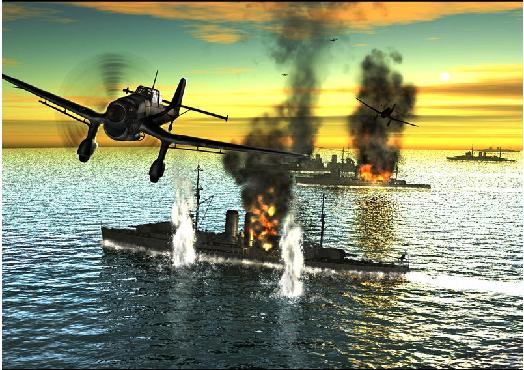
Ship-mounted weapons:
Naval guns
All ships in the game can carry Naval Guns, which they use to fire shells of various calibers at other ships in order to damage them (or, in the case of AA, at enemy planes in order to shoot them down). As a player's gunnery sailors rise in level, they gain access to larger and more powerful guns; higher caliber shells can be fired from larger guns, and they also have more guns per turret.
Each specific gun has up to four variants that determine its firing range and reload times. In general the N variants are available at the lowest level, soon followed by the 'L' variant, and then the 'D' variant. 'A' variants need specialized anti-air gunners, therefore they are separated from regular guns even if they are similar otherwise.
Torpedo launchers
Generally considered as a secondary armament by most players, Torpedo Launchers are used to drop torpedoes into the water. Torpedoes then travel in a straight line until they either contact a ship or land, or run out of fuel, at which point they detonate, doing splash damage to all ships nearby. While torpedoes take longer to reload than naval guns, they also do far more damage, in some cases being able to sink poorly-armored ships with one or two torpedoes. Some ships, particularly those of the IJN, are designed specifically to use torpedo launchers as their primary weapons.
Depth Charges
Depth Charges are used to effectively fight submarines. They work similar to Torpedo launchers, as the Depth charge launcher will have to be mounted on a T weapon mount, after which they can be launched in game. If a ship does not speed away from the launch site at full overheat, it may get damaged by the large area of effect damage of these weapons. The depth charge can heavily damage and destroy submarines with relative ease. Depth Charges explode six seconds after they are deployed. The difficulty in using Depth Charges is that they will have to be launched very close and in the path of the submarine to be effective. Generally, any class ship above the CL class is uncapable of sailing near a submarine and dropping depth charges effectively without getting hit. Secondly, only FF, DD and CL class ships can use the sonarman support sailor to be able to detect submerged submarines.
Naval mines
Certain ships may mount mine launchers in order to drop naval mines in the water. In order to launch mines, players must first purchase them (500 mines for $1 USD, or 1000 mines for $2 USD), then mount a mine launcher on their ship. When dropped on the battlefield, mines will become invisible, and arm themselves 10 seconds after being dropped. If a ship, friend or foe, crosses the mine while it is active, it will explode, damaging the ship. Mines are always visible to all ships on the team of the ship that launched the mine. Ships on the enemy team will not be able to see the mines, except for FFs and DDs, which can spot enemy mines in the water close to a certain radius. Mines may also be attacked using guns, which will destroy the mines after a certain amount of damage.
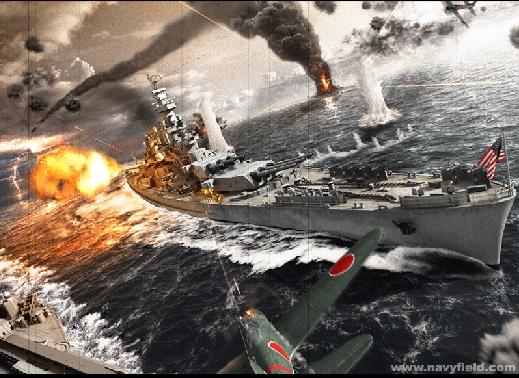
Naval Aircraft:
As in real naval combat; airplanes are very potent weapons and tools that can easily turn the tide of battle in the proper circumstances. In order to use airplanes, players must first have at minimum a Rookie Pilot sailor on their ship; for the specialized airplanes, more specialized classes are required. Their ship must have the ability to carry planes.
Scouts
Scouts, while not necessarily weapons in the normal sense, are considered the eyes of a fleet. Most CLs, all CAs and BCs, and most BBs (the Nelson class battleship being the only exception) are able to carry scouts. Scouts have a very wide range of view; however, they possess very little firepower with which to defend themselves, are comparatively slower than most other planes, and are easy to shoot down. For this reason, most ships are able to carry more than one scout, in the very likely event that one is lost in battle. Scouts require a Rookie Pilot to fly them; pilots of higher classes may not pilot scouts.
Fighters
In order to protect their fleets, CVs may carry and launch Fighters from their flight decks. The role of the fighter is to intercept and destroy enemy planes that pose a threat to all friendly ships and, in the case of enemy fighters, a threat to friendly airplanes. While fighters are very useful in destroying enemy airplanes, they cannot attack enemy ships, which can shoot them down with AA. Fighters are very fast and have considerable firepower, but have the shortest flight time of all planes and rely on friendly ships and scouts in order to see around them, as their sight-range is very poor.
Torpedo bombers
Torpedo bombers use aircraft mounted torpedoes to destroy enemy ships. They are one of two types of airborne bombers that can be used by CV's to destroy ships. They have to engage in a dive and fly to the ship in low altitude to be able to release torpedoes. This makes them vulnerable to AAW, or Direct Anti Aircraft fire. Torpedo bombers are more easy to operate than Dive Bombers because there is less possibility of dodging the attacks, and less vulnerability to flak.
Dive bombers
The second primary anti-ship weapon that CVs yield, Dive Bombers, or DBs for short, are used to attack and destroy enemy ships. Similar to TBs they are vulnerable to attack and cannot see very far, but like TBs, they have the ability to destroy ships without putting the CV in danger. Dive bombers attack by flying over their targets, diving downwards, and dropping their bombs onto the decks of ships. Because they directly attack a ship instead of its bulge, they are very useful for wearing down a ship for others to finish off with shells. Furthermore, because they do not have to drop altitude to release their ordnance, they are less vulnerable to automatic anti-air. However, because they have to fly directly over a target, they are more vulnerable to flak.
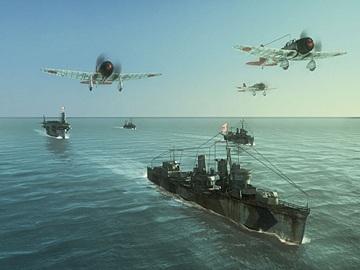
=================================================================================
NB: The above text has been collected / excerpted / edited / mangled / tangled / re-compiled / etc ... from the following online sources :
NAVY FIELD (game info) - wikipedia article #1
NAVY FIELD game review - www.softpedia.com
NAVY FIELD game review - www.castersrealm.com
NAVY FIELD game review - feature.mmosite.com
NAVY FIELD game review - www.subsim.com
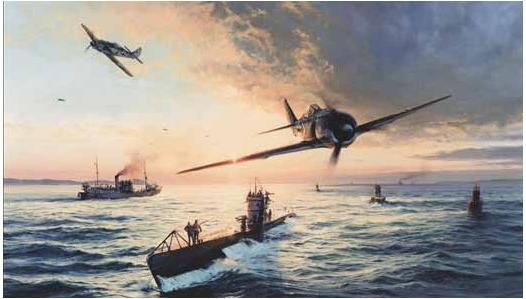

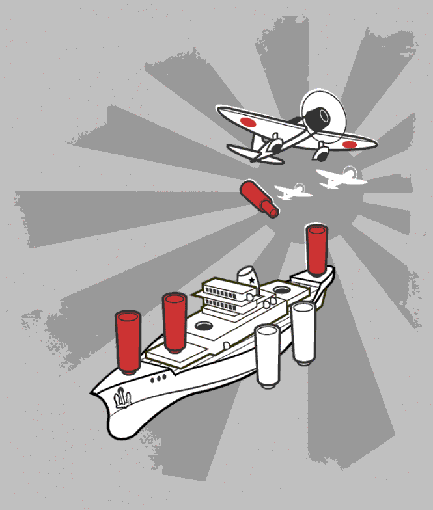

BB: Kagero (DD) - Fubuki (DD) - Tatsuda (DD) - Simakaze (DD) - Kuma (CL) - Myoko (CA) - Ise (BB) - Nagato (BB) - ...
- - - - - - - - - - - - - - - - - - - - - - - - - - - - - - - - - - - - - - - - - - - - - - - - - - - - - - - - - - - - - ... - Yamato (BB) - Super Yamato (BB)
CV: Kagero (DD) - Akitsuki (DD) - Tsukikei (DD) - Agano (CL) - Mogami (CA) - Junyo (CV) - Unryu (CV) - Taiho (CV) - ...
- - - - - - - - - - - - - - - - - - - - - - - - - - - - - - - - - - - - - - - - - - - - - - - - - - - - - - - - - - - - - ... - Shokaku (CV) - Shinano (CV)
SS: Simakaze (DD) - Vickers L3 (SS) - Junsen Type-1 (SS)
BB: Z - 1 (DD) - Spaehkruezer (DD) - Koenigsberg (CL) - M Projekt (CL) - Admiral Hipper (CA) - Prinz Eugen (CA) - ...
- - - - - - - - - - - - - - - - - - - - - - - - - - - - - - - ... - Scharnhorst (BC) - Gneisenau (BC) - Bismarck (BB) - H-39 (BB) - H-44 (BB)
CV: Z - 1 (DD) - Spaehkruezer (DD) - Koenigsberg (CL) - M Projekt (CL) - Admiral Hipper (CA) - Seydlitz (CV) - ...
- - - - - - - - - - - - - - - - - - - - - - - - - - - - - - - ... - Graf Zeppelin (CV) - Graf Zeppelin II (CV) - Europa (CV) - De Grasse (CV)
SS: Z - 1 (DD) - Koenigsberg (CL) - Type II (SS) - Type VII-A (SS)
NEUT: Frigate (FF) - Destroyer (DD) ... Neutral Nation ( Starter Ships )